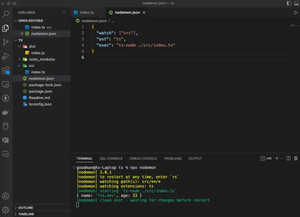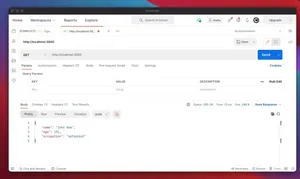Overview
Sequelize is a powerful Object-Relational Mapping (ORM) library for Node.js. It allows developers to write database queries in a way that is abstracted from the underlying database engine, providing a smooth workflow for working with structured data. This article will explore the handling of nested relationships in Sequelize, an essential aspect when dealing with complex data models that involve multiple related tables.
Understanding Associations
In Sequelize, relationships between tables – known as associations – can be categorized under one-to-one, one-to-many, and many-to-many. Proper management of these associations is key to effectively querying and manipulating data. We will start with the basics of defining associations and work our way up to handling nested relationships.
const User = sequelize.define('user', {/* ... */});
const Project = sequelize.define('project', {/* ... */});
// One-to-One relationship
User.hasOne(Profile);
// One-to-Many relationship
User.hasMany(Project);
// Many-to-Many relationship
User.belongsToMany(Project, { through: 'UserProjects' });
Project.belongsToMany(User, { through: 'UserProjects' });
Fetching Nested Data
Once associations are set up, we can fetch nested data using the include option provided by Sequelize. This option enables us to retrieve associated models in a single query, reducing the number of database calls we have to make.
User.findByPk(1, {
include: [Profile, Project]
}).then(user => {
// user.Profile & user.Projects are available
}).catch(error => {
// Handle error
});
Deep Nesting
For more complex scenarios where models are nested within nested models, Sequelize supports multi-level eager loading.
Project.findAll({
include: [{
model: User,
include: [Profile]
}]
}).then(projects => {
// Access nested data
}).catch(error => {
// Handle error
});
Creating Nested Records
Sequelize not only allows you to fetch nested data but also to create nested records in a single operation using the ‘nested creation’ feature.
User.create({
username: 'johndoe',
Projects: [{
title: 'Sequelize Project'
}]
}, {
include: [Project]
});
Advanced Techniques
In more advanced use cases, you might need to leverage transactions to ensure data integrity, or perhaps use custom setters and getters to manipulate nested data before saving or retrieving it from the database.
Transactions are critical when creating or updating multiple records that depend on one another.
sequelize.transaction((t) => {
return User.create({
username: 'johndoe',
Projects: [{
title: 'Sequelize Project'
}]
}, {
include: [Project]
}, { transaction: t });
}).then(result => {
// Transaction has been committed
}).catch(error => {
// Transaction has been rolled back
});
Migrating Existing Relationships
In cases where you need to migrate existing relationships, Sequelize offers functions like addX, setX, and removeX to manipulate associations directly.
User.findByPk(1).then(user => {
return user.addProject(projectInstance);
});
Conclusion
Throughout this article, we have explored the ways in which Sequelize handles nested relationships, from fetching and creation to more advanced techniques such as transactions and direct associations manipulation. With these tools, you can effectively manage complex data models and ensure smooth data operations in your Node.js applications that use Sequelize as an ORM.
Remember that while Sequelize abstracts much of the complexity of dealing with SQL directly, it still requires a solid understanding of your database structure and the relationships between your data entities. Effective use of nested relationships can lead to highly efficient and maintainable code, so it is worth spending the time to understand and leverage these features fully.

